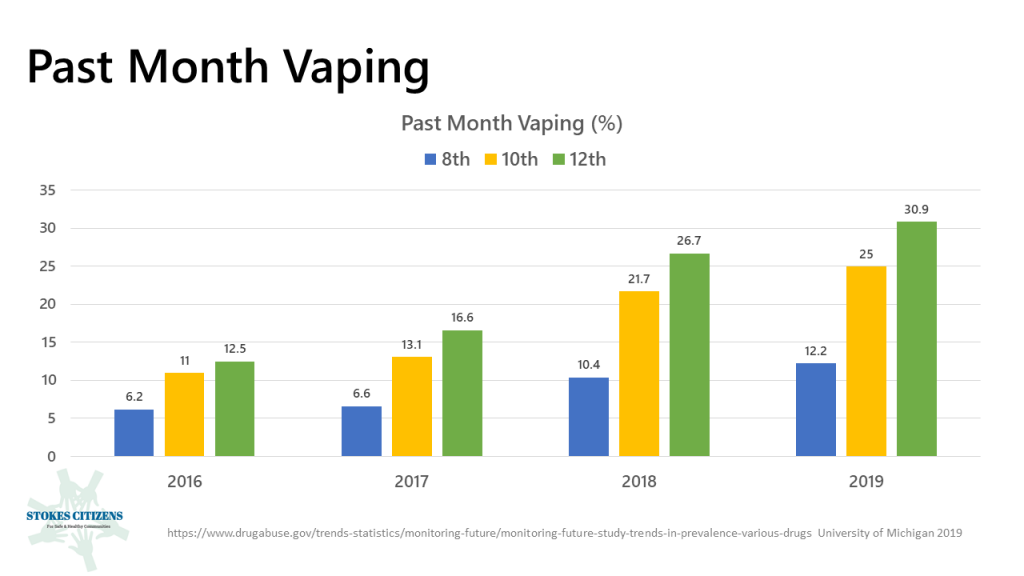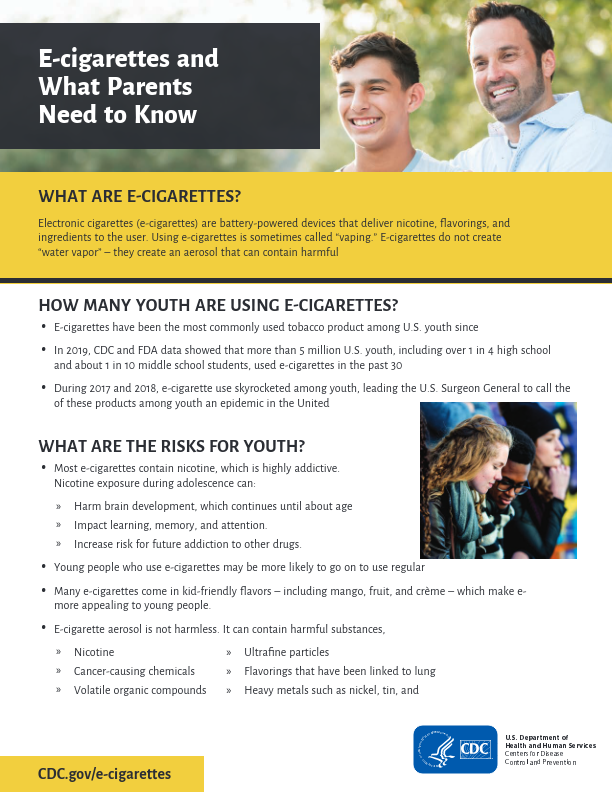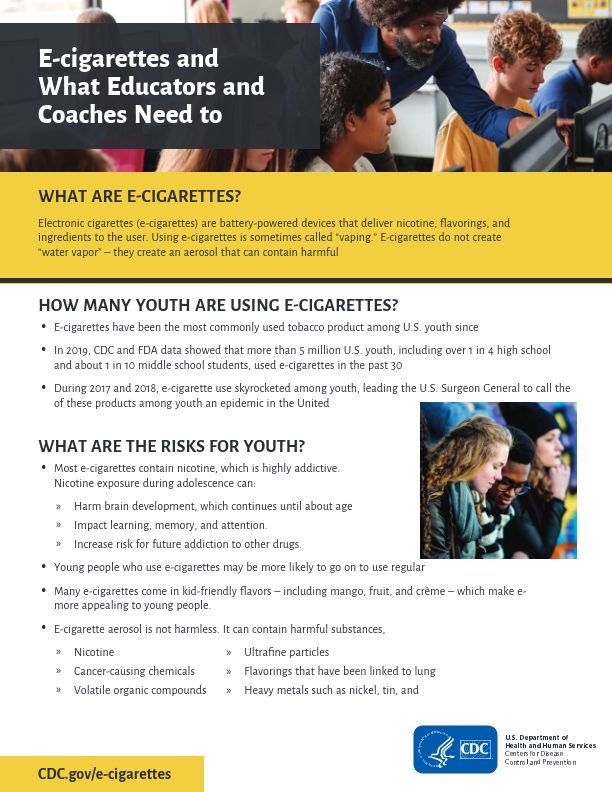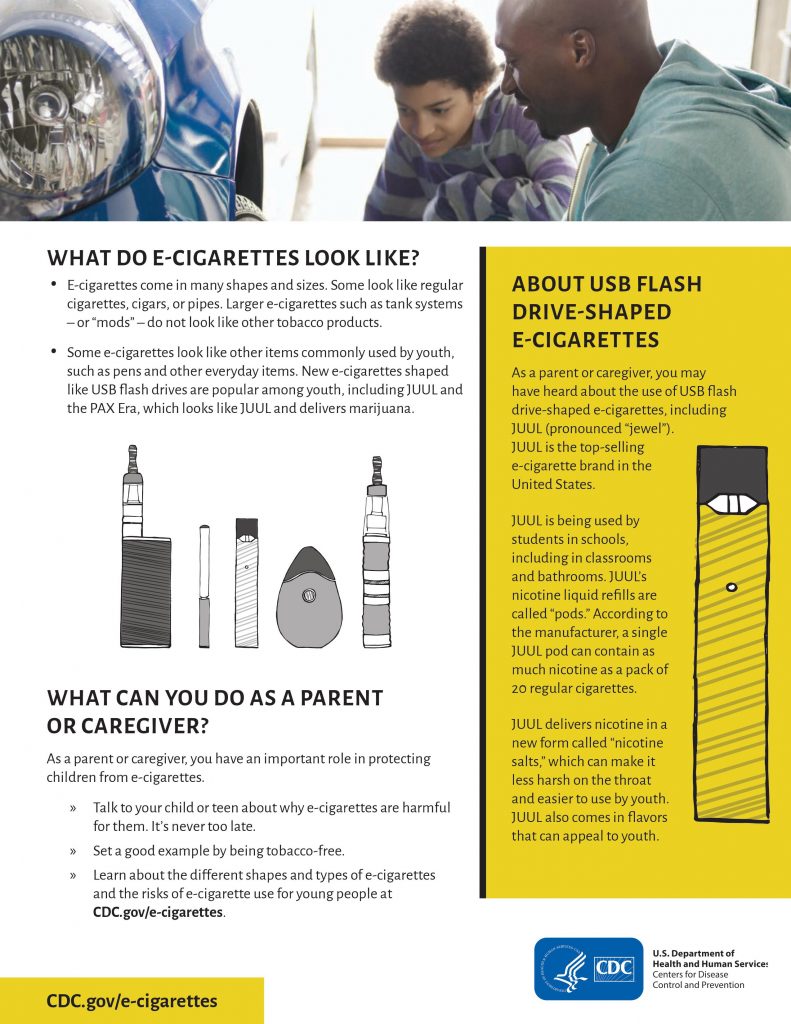We will post information on the ever-changing landscape of electronic cigarettes and dangers associated with vape use by our youth. We will share information and articles from trusted, verified sources that you will be able to review to be better informed. Youth who have parents/guardians who talk with them about substance use are 50% less likely to use substances. Talk, they hear you.
For Quick facts on the Risks of E-Cigarettes for Kids, Teens and Young Adults Click here.
Video added 2/21/20 at 5:00pm
We already know from a 2019 national survey of over 42,000 youth that 24.3% of 8th graders, 41% of 10th graders and 45.6% of 12th graders have tried vaping at some point in their lifetime, but why is this important? Why is it dangerous for them to experiment with vaping products?
Benzoic acid is an ingredient added to the nicotine during manufacturing. It is one of the components used in popular vaping liquirs which can “mellow” the flavor of the nicotine that is inhaled. During the manufacturing process benzoic acid is added to the nicotine to reduce the harshness when inhaled.
If you are reducing the harshness of nicotine, which is highly addictive, and youth are experimenting at a very high rate (12.2% of 8th graders, 25% of 10th graders and 30.9% of 12th graders reporting vaping in the last 30 days), this leads to an increased chance of nicotine addiction.

WHAT PARENTS NEED TO KNOW ABOUT VAPING
In an article published by the Center for Disease Control, with content from the Office on Smoking and Health, National Center for Chronic Disease Prevention and Health Promotion.
If anyone can speak firsthand about the significant rise in e-cigarette use by kids, teens, and young adults, it’s someone who works with them every day. Lauren W., a high school teacher in Pennsylvania, often hears her students talking about using e-cigarettes. But when it comes to the dangers of nicotine and addiction for young people, she does not believe they really understand how dangerous e-cigarettes are for their health. 
“I talk to them about the risks all the time,” she says, “and those talks reveal that they have never really thought about it.”
As someone who can influence young people, Lauren is doing what she can to teach them about the harms e-cigarette use can have on them. “They are always interested when I pull up research and start listing off findings,” she says.
WHAT EDUCATORS AND COACHES NEED TO KNOW
Young people are also more likely to pay attention if the adults in their lives who they trust and respect are willing to talk. Teachers and administrators can use health classes and assemblies this upcoming school year to invite students to ask questions about e-cigarettes. There are many e-cigarette prevention programs teachers can use in their classrooms to let students know about the risks of e-cigarette use.
WHAT’S THE BOTTOM LINE?
-
E-cigarettes have the potential to benefit adult smokers who are not pregnant if used as a complete substitute for regular cigarettes and other smoked tobacco products.
-
E-cigarettes are not safe for youth, young adults, pregnant women, or adults who do not currently use tobacco products.
-
While e-cigarettes have the potential to benefit some people and harm others, scientists still have a lot to learn about whether e-cigarettes are effective for quitting smoking.
-
If you’ve never smoked or used other tobacco products or e-cigarettes, don’t start.
-
Additional research can help understand long-term health effects.



